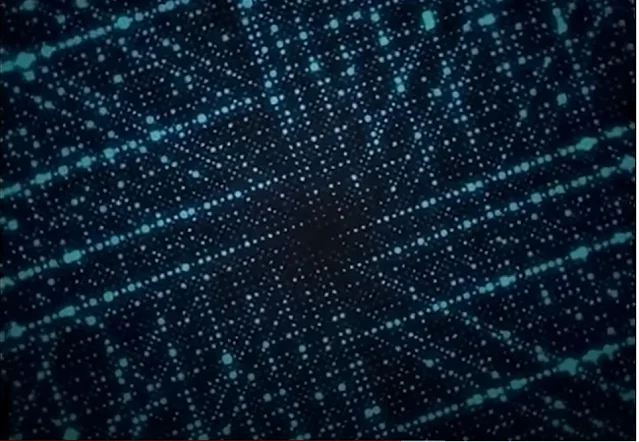In the vast realm of number theory, Goldbach's Conjecture stands as an intriguing puzzle that has fascinated mathematicians for centuries. Proposed by the German mathematician Christian Goldbach in a letter to Euler in 1742, the conjecture suggests that every even integer greater than 2 can be expressed as the sum of two prime numbers. Despite its simplicity, the conjecture has eluded proof, becoming one of the oldest unsolved problems in mathematics.
Goldbach's Conjecture can be succinctly stated as follows: Every even integer greater than 2 can be expressed as the sum of two prime numbers. For example, 4 = 2 + 2, 6 = 3 + 3, 8 = 3 + 5, and so on. While the conjecture has been verified for vast ranges of even numbers, a rigorous proof has remained elusive, leaving mathematicians in a state of both anticipation and frustration.
Over the centuries, numerous mathematicians have made attempts to prove or disprove Goldbach's Conjecture. Euler, one of the greatest mathematicians of the 18th century, made significant strides by proving the conjecture for a specific class of numbers. However, a complete proof has continued to slip through the grasp of the mathematical community.
Advancements in computational technology have allowed mathematicians to verify Goldbach's Conjecture for an immense range of even numbers. With the aid of computers, researchers have checked the validity of the conjecture for numbers up to the order of 4 x 10^18. Despite this extensive computational evidence, a formal proof remains elusive, and the conjecture stands as an open problem.
The challenge lies in the intricate nature of prime numbers. Prime numbers, divisible only by 1 and themselves, exhibit a seemingly random distribution, making it difficult to predict their behavior. Goldbach's Conjecture hinges on the idea that any even number can be expressed as the sum of two of these elusive primes, presenting a complex puzzle that continues to baffle mathematicians.
Mathematicians worldwide are actively engaged in the pursuit of a proof for Goldbach's Conjecture. The mystery surrounding this problem serves as both a testament to the depth of number theory and an inspiration for aspiring mathematicians. Some believe that new insights into the properties of prime numbers or innovative mathematical techniques may eventually unlock the secret behind Goldbach's Conjecture.
Goldbach's Conjecture, standing tall as an enduring enigma in the realm of number theory, has captivated the minds of mathematicians for centuries. While computational evidence supports its validity for vast ranges of even numbers, the lack of a formal proof leaves the conjecture in a state of limbo. As mathematicians continue to explore the intricate world of prime numbers, the quest for a proof of Goldbach's Conjecture remains an exciting journey into the heart of mathematical mysteries.
Read More : https://www.ams.org/notices/200008/comm-millennium.pdf
ගෝල්ඩ්බැච්ගේ අනුමානයේ ප්රහේලිකාව අගුළු හැරීම: ප්රයිම් අංක වෙත ගමනක්
සංඛ්යා න්යායේ අතිවිශාල ක්ෂේත්රය තුළ, ගෝල්ඩ්බැච්ගේ අනුමානය සියවස් ගණනාවක් තිස්සේ ගණිතඥයින් ආකර්ෂණය කළ කුතුහලය දනවන ප්රහේලිකාවක් ලෙස පවතී. ජර්මානු ගණිතඥයෙකු වන ක්රිස්ටියන් ගෝල්ඩ්බැක් විසින් 1742 දී ඉයුලර් වෙත ලිපියක් යවමින් යෝජනා කරන ලද අතර, 2 ට වඩා වැඩි සෑම ඉරට්ටේ නිඛිලයක්ම ප්රථමක සංඛ්යා දෙකක එකතුවක් ලෙස ප්රකාශ කළ හැකි බව උපකල්පනය යෝජනා කරයි. එහි සරල බව තිබියදීත්, උපකල්පනය සාධනය මග හැරී ඇති අතර, එය ගණිතයේ පැරණිම නොවිසඳුනු ගැටළු වලින් එකක් බවට පත්ව ඇත.
ගෝල්ඩ්බැච්ගේ අනුමානය සංක්ෂිප්තව පහත පරිදි දැක්විය හැක: 2ට වඩා වැඩි සෑම ඉරට්ටේක්ම ප්රථමක සංඛ්යා දෙකක එකතුවක් ලෙස දැක්විය හැක. උදාහරණයක් ලෙස, 4 = 2 + 2, 6 = 3 + 3, 8 = 3 + 5, සහ යනාදිය. ඉරට්ටේ සංඛ්යා විශාල පරාසයක් සඳහා උපකල්පනය සත්යාපනය කර ඇති අතර, දැඩි සාධනයක් නොපැහැදිලිව පවතින අතර, ගණිතඥයින් අපේක්ෂාවෙන් සහ අපේක්ෂා භංගත්වයට පත් වේ.
සියවස් ගණනාවක් පුරා, බොහෝ ගණිතඥයින් ගෝල්ඩ්බැච්ගේ අනුමානය ඔප්පු කිරීමට හෝ ප්රතික්ෂේප කිරීමට උත්සාහ කර ඇත. 18 වැනි ශතවර්ෂයේ විශිෂ්ඨතම ගණිතඥයෙකු වන ඉයුලර්, නිශ්චිත සංඛ්යා පන්තියක් සඳහා වන අනුමානය සනාථ කරමින් සැලකිය යුතු ප්රගතියක් ලබා ඇත. කෙසේ වෙතත්, සම්පූර්ණ සාක්ෂියක් ගණිත ප්රජාවගේ ග්රහණයෙන් දිගින් දිගටම ලිස්සා ගොස් ඇත.
පරිගණක තාක්ෂණයේ දියුණුව නිසා ගණිතඥයින්ට ඉරට්ටේ සංඛ්යා විශාල පරාසයක් සඳහා ගෝල්ඩ්බැච්ගේ අනුමානය සත්යාපනය කිරීමට ඉඩ ලබා දී ඇත. පරිගණක ආධාරයෙන්, පර්යේෂකයන් 4 x 10^18 අනුපිළිවෙල දක්වා සංඛ්යා සඳහා අනුමානවල වලංගුභාවය පරීක්ෂා කර ඇත. මෙම පුළුල් ගණනය කිරීමේ සාක්ෂි තිබියදීත්, විධිමත් සාක්ෂියක් නොපැහැදිලි වන අතර, අනුමානය විවෘත ගැටළුවක් ලෙස පවතී.
අභියෝගය පවතින්නේ ප්රථමික සංඛ්යාවල සංකීර්ණ ස්වභාවය තුළ ය. ප්රාථමික සංඛ්යා, 1 න් පමණක් බෙදිය හැකි අතර ඒවායින්, පෙනෙන අහඹු ව්යාප්තියක් පෙන්නුම් කරයි, ඔවුන්ගේ හැසිරීම අනාවැකි කීම දුෂ්කර කරයි. ගෝල්ඩ්බැච්ගේ අනුමානය, ගණිතඥයන් නොකඩවා අවුල් කරන සංකීර්ණ ප්රහේලිකාවක් ඉදිරිපත් කරමින්, මෙම නොපැහැදිලි ප්රාථමික දෙකේ එකතුවක් ලෙස ඕනෑම ඉරට්ටේ සංඛ්යාවක් ප්රකාශ කළ හැකිය යන අදහස මත රඳා පවතී.
ලොව පුරා සිටින ගණිතඥයින් ගෝල්ඩ්බැච්ගේ අනුමානය සඳහා සාක්ෂි සෙවීමේ ක්රියාකාරීව නිරතව සිටිති. මෙම ගැටලුව වටා ඇති අභිරහස සංඛ්යා න්යායේ ගැඹුරට සාක්ෂියක් මෙන්ම අපේක්ෂා කරන ගණිතඥයින් සඳහා ආශ්වාදයක් ලෙසද ක්රියා කරයි. ප්රථමික සංඛ්යා හෝ නව්ය ගණිතමය ක්රමවල ගුණ පිළිබඳ නව තීක්ෂ්ණ බුද්ධිය අවසානයේ ගෝල්ඩ්බැච්ගේ අනුමානය පිටුපස ඇති රහස අගුළු හැරිය හැකි බව සමහරු විශ්වාස කරති.
සංඛ්යා න්යායේ ක්ෂේත්රයේ කල්පවත්නා ප්රහේලිකාවක් ලෙස උස්ව නැගී සිටින ගෝල්ඩ්බැච්ගේ අනුමානය, සියවස් ගණනාවක් තිස්සේ ගණිතඥයන්ගේ සිත් ඇද බැඳ තබා ඇත. පරිගණකමය සාක්ෂි මගින් ඉරට්ටේ සංඛ්යා විශාල පරාසයක් සඳහා එහි වලංගු භාවයට සහාය වන අතර, විධිමත් සාක්ෂියක් නොමැතිකම අනුමානය අස්ථාවර තත්ත්වයකට පත් කරයි. ගණිතඥයින් ප්රථමික සංඛ්යාවල සංකීර්ණ ලෝකය ගවේෂණය කිරීම දිගටම කරගෙන යද්දී, ගෝල්ඩ්බැච්ගේ අනුමානය පිළිබඳ සාධනයක් සඳහා වන ගවේෂණය ගණිතමය අභිරහස්වල හදවතට උද්වේගකර ගමනක් ලෙස පවතී.


Comments
Post a Comment